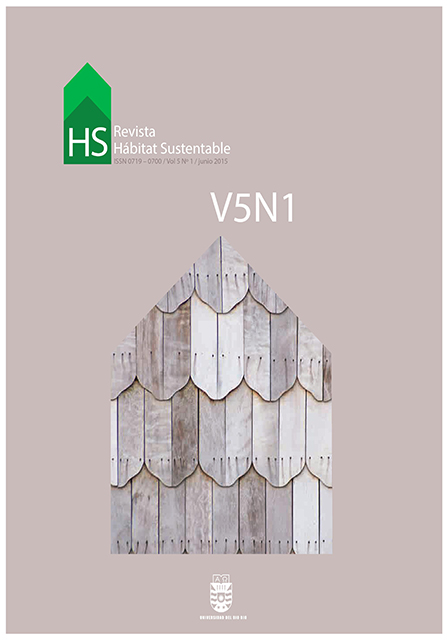Evaluation of the environmental performance of two wineries in Mendoza, Argentina: A proposal for thermal and energy refurbishment
Keywords:
Environmental performance, wineries, thermal and energy refurbishmentAbstract
This article evaluates the thermal and energy performance of two wineries in the province of Mendoza, Argentina (32° 40’ S, 68° 51’ W, 750m above sea level). The grape harvesting period (February–March) was selected for analysis because cooling demand at that time is higher: tons of hot raw material (at approximately 26-30°C) enter the wineries to be processed at 8°C, while outdoor temperatures are around 38°C. The selected wineries have similar-sized buildings and the same quantity and quality of production, but different management and envelope materiality. Winery P was built with walls of traditional bricks, single pane windows and a metal roof with thermal insulation; while winery H´s walls were partially built of reinforced concrete panels with thermal insulation, insulated metal roofs and double pane windows. Air, envelope surface, relative humidity and solar radiation temperatures were measured in situ and studied in relation to the energy consumption records of each winery. Then, with the data obtained, a model was generated with Energy Plus software, which was used to simulate envelope improvement alternatives. As a result, both wineries showed improved performance. The temperatures measured in winery P reached an average of 18.89 °C without the use of auxiliary energy. In the case of winery H, temperatures were optimized, thereby achieving an average of 21.77 °C, once again without the use of auxiliary energy. Moreover, it is possible to integrate night ventilation strategies using outdoor temperatures that decrease 9.78 °C in the period analyzed. The thermal and energy refurbishment proposal, which integrates building and envelope improvements, results in minimum indoor temperatures of 15.65 °C without the use of auxiliary energy--optimal for wine production.
Downloads
Downloads
Published
How to Cite
Issue
Section
License
The content of articles which are published in each edition of Habitat Sustentable, is the exclusive responsibility of the author(s) and does not necessarily represent the thinking or compromise the opinion of University of the Bio-Bio.
The author(s) conserve their copyright and guarantee to the journal, the right of first publication of their work. This will simultaneously be subject to the Creative Commons Recognition License CC BY-SA, which allows others to share-copy, transform or create new materials from this work for non-commercial purposes, as long as they recognize authorship and the first publication in this journal, and its new creations are under a license with the same terms.











 Scientific Information Program/Concurso Fondos de Publicación de Revistas Científicas 2018/ Proyecto Mejoramiento de Visibilidad de Revistas UBB (Código:FP180007).
Scientific Information Program/Concurso Fondos de Publicación de Revistas Científicas 2018/ Proyecto Mejoramiento de Visibilidad de Revistas UBB (Código:FP180007).





